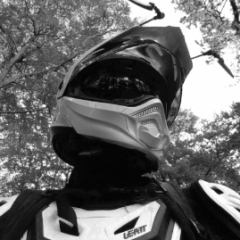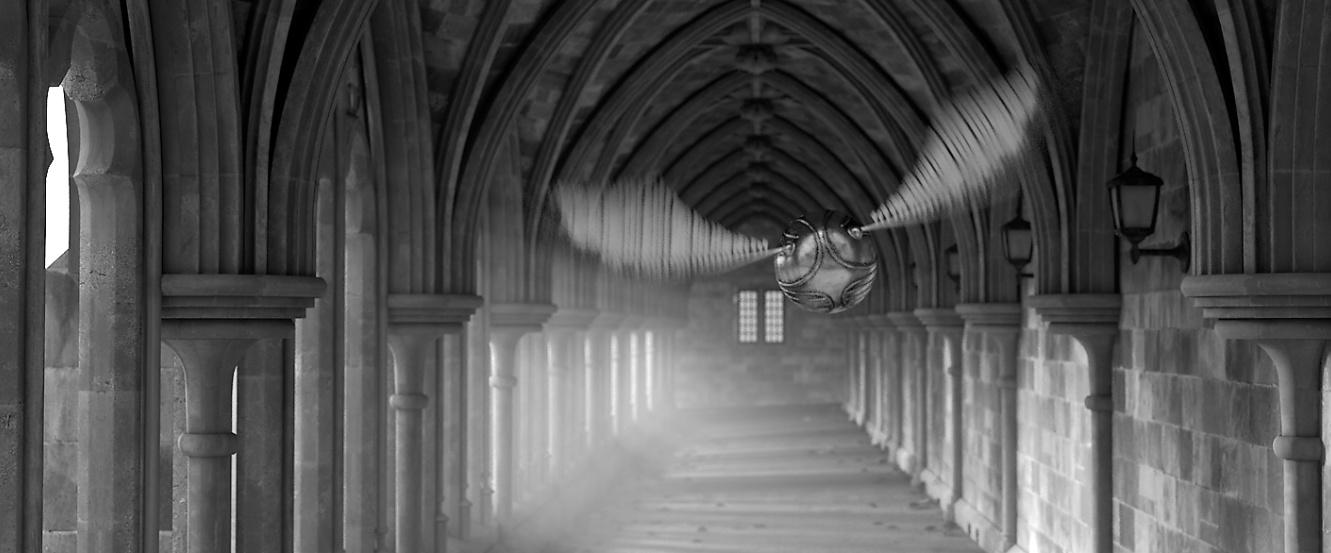-
Posts
17,957 -
Joined
-
Days Won
733
Content Type
Profiles
Blogs
Forums
Gallery
Pipeline Tools
3D Wiki
Plugin List
Store
Downloads
Everything posted by Cerbera
-
That's quite a long-winded thing to explain ! Fortunately, XP TV have done it already. You might also find Noseman's recent series of mechanical rigging sessions on the Maxon training channel helpful. CBR
-
Because the 2 parts of the line are different lengths. If they were the same it would work. By adding interpolation steps we make the gaps between each point even again. Another way would be to resample the spline using Resample Spline Node as child of spline, or via MoSpline. CBR
-
That'll be a spline interpolation thing. Change Natural to Uniform and increase Number to something like... You could use less subdivisions if you only had more original points in the spline, but you don't so we have to keep the number high to stop it rounding off the corner. But now everything should be going along it at a consistent rate. CBR
-
Ok, if you are going to move stuff then I think soft selection (a tab within PSR tools) is most useful to you, in conjunction with a few of our selection tools to make sure we are only moving certain things... For example, in poly mode, you could start with U,L (loop select) to grab a loop high up on the arm, then do U,F (fill selection) to grab every poly under that to the end of the fingers in one easy click... and then you can put the modelling axis in the most helpful place for the operation at hand (axis mode or sliders under tool attributes), turn on soft selection in any component mode, set a suitable radius and start massaging things in the right direction, using perhaps the standard transform tools in conjunction with Brush / Smear tools to make things go where you want them. Here's an example of how you might do that... So here I have a low poly model of a larger gentleman with his arms in wrong place. I have done the above and selected all the polys in right arm, engaged soft selection (surface mode so we don't grab his body too by mistake) and moved and rotated the axis so it lines up with his body in a way that will be most helpful to me then rotating it from that point, straighter. So using mainly rotate and move tools I can now get his arm vaguely where I want it, like so... and I can keep adjusting until it is mostly right, and then turn attention to the now mangled loops in the transition area. For these we can move into Edge mode, get the Move tool, and double click to get individual rings of edges that we can then move about to even out the transition and hopefully avoid any intersection. Whilst we are in the modelling tools though, a number of other things there are likely to be very helpful; Iron (applied to the polys around the transition point) and Brush (smooth / relax modes) both do superb jobs of smoothing and untangling any bunched up or intersecting polys. That way I can get his pose exactly right, more like this one... The important thing whilst doing all this is not to actually add or delete any points / edges or polys to this mesh, which will break your UVs if you do - the mesh's point count and order must remain the same in order to preserve that, but apart from that, you can do pretty much anything you like to your base mesh before you rig it ! Hope that helps CBR
-
Given the clothing and possible mesh beneath it, and the possibility of intersections, it might be quite tedious to move it to T-pose first, so I think in this instance I would rig it in A-pose from the get-go. Nice dog in avatar BTW ! 🙂 CBR
-
Welcome to the Core 🙂 Even though the setup you are describing sounds quite simple, you should always upload your current scene file, so we can see exactly what the situation is, what the OM hierarchy is doing, and if there are any issues with the setup you may not be aware of. Trying to help without that introduces a lot of guesswork and variables. CBR
-
We'll be needing the scene file to find out... CBR
-

Any way to speedup preparation time for C4D hair?
Cerbera replied to Stefano Strika's topic in Cinema 4D
Don't know for sure, but I would guess not. I suppose the delay might be because the hair is presumably converted to geometry for the renderer maybe ? I did wonder if converting it yourself prior to rendering might help... CBR -
Alas my job went on all night, so only had time for a quick preliminary look at this in which I tried the plan above, applied a single level of SD and then changed the edge flow around the mouth. Not sure it's the holotype solution here, but hopefully it's a nudge in the right direction.. I may have an improved version of that later... but actually the more pronounced corner to the mouth is more what snake mouths do than what you were aiming for. But we could also try and recue what you have and get what you want, but we really do need to add that extra loop to do it (and another one through the eyes nose ideally). But that is not something to fear, and once we have spread out the ones either side it's already looking a bit more even front to back if not top to bottom... and we don't get much pinching this way... CBR
-
Cheers FM. Got a rush client job on atm, so will look at this in the night, and get back to you... CBR
-
From what I can see without the file that is a 'not enough polygon density in the base mesh' type problem, or what happens when we try and put too small a level of detail into a much more widely spaced mesh. So what you are seeing there is 'unsupported SDS left to its own devices' in the absence of enough structural and supporting loops to cope with that relatively small size of feature... Contrary to the prevailing wind on whether SDS should be expected to provide a nice curve out of a channel that is just 1 poly wide I would remain confident that it can't in this situation, or at least not without a ton of help from edge or point weighting, both of which are likely to give you lumpy surfaces. The answer is usually to apply a level or 2 of subdivision BEFORE adding the smaller details like the channel. If I had the file I could probably say more. CBR
-
Further into the training team video I referenced above, they do in fact circle back to briefly address particle to particle collision, and the consensus seemed to be... soon, but not now. I am looking forward to the day when we can do this sort of thing... CBR
- 8 replies
-
2
-
- Rendering
- Simulation
-
(and 1 more)
Tagged with:
-
Are you caching the scene (via PGroup Cache tab) before you render the animation ? When I do that it is rendering OK for me, both in VP render (to PV) and RS... Sorry it's taken me a while to get to this - I read it when you first posted, and have been trying to track down a definitive answer about whether we should be able to do self-colliding particles without having to clone to them and do it via a RB tag. In your setup that approach is fine, but I am curious to know how we would, for example accumulate vast piles of sand, soil or snow, where, in theory there are too many particles flying about for even new dynamics to cope with... It did get asked in the first Maxon training Team Particles YT stream a few weeks back, but unfortunately Noseman looked like he misunderstood the question, and only showed the geometry collision, and the OP there didn't clarify ! CBR
- 8 replies
-
- Rendering
- Simulation
-
(and 1 more)
Tagged with:
-
There has been an issue recently with selection in orthographic viewports, but I was not aware of anything affecting Perspective view. However testing that in latest versions today I concur with you there is a problem in all viewports, which I have reported. As you note, the only workaround I can find at the moment is to shift the view and reselect, which I appreciate isn't ideal. If it is helpful at all while they work on that, in the meantime I believe it all works correctly back in 2023.1.2. CBR
-
Agreed. Probably been done via some auto unwrap method, or in substance or something. Last time I did a shark my UVs looked like this... CBR
-
Ah no worries - pleased we know what the cause was ! CBR
-
Yeah, let's have look at those UVs please - screenshot of the UV canvas will do it... CBR
-
It's very hard to tell without either the file or the UV map ! I would certainly need to see the latter at a minimum to know where the seams were meant to be. It is possible that this mesh depends on the Normal Tag to surface properly, but maybe not if it was created in Cinema originally. Aside from things like checking Use edge breaks is off in the phong tag and checking the normal directions of the polys in the mesh there isn't much more to suggest without adding a Normal Tag back, and manually editing / checking to see what the Normals are doing along that line, and averaging them to each other using the Normal Editor if they are wrong. In View settings make sure you are viewing vertex and polygon normals to get the clearest idea of what is going on with your mesh. CBR
-
I think that is for monetization reasons. Chris / RL used to have 2 YT channels, one for the live stuff, and another one that used to be used to archive past streams just before the new one went live. But recently that has been limited to only older series, new feature / version presentations and the odd specialised tutorial. I think the complete archive of episodes is probably only available to his patreons. Not sure that is 100% correct, but that does seem to be the way it works now. CBR
-
Oh THAT's where they're hiding that these days ! CBR
-
Oh I see what you mean. Hmmm. not sure about the 'right' way to do that, but you can stop the anim at the frame you want and do a current state to object on the hair, which will get you a hair-renderable spline of the current state, but then of course you have lost the parametricity and subsequent dynamics without linking it to a new Hair object, which I am not currently sure how to do, but seem to recall it is a doable thing ! CBR
-
You should be able to simply turn hair dynamics off in the object settings, so your question mentioning disabling dynamics has confused me somewhat. Additionally, you can use any of the hair styling tools, which has much the same effect and auto-disables dynamics. CBR

